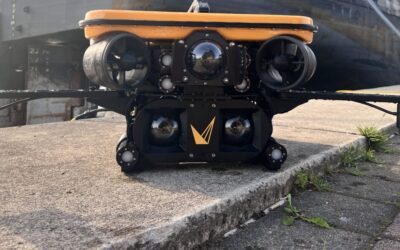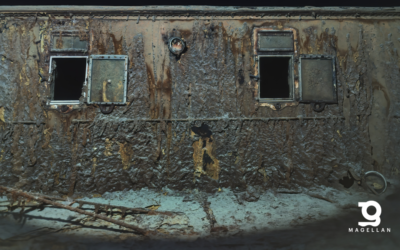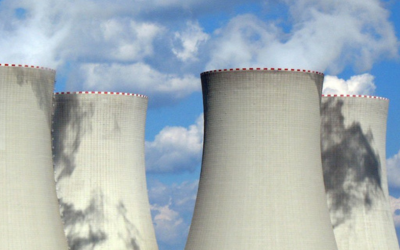Beneath the waves lies a world of wonder and mystery that continues to captivate our imagination. Remote Operated Vehicles (ROVs) have become our eyes and hands in this enigmatic realm, enabling us to unveil its secrets. In this exclusive interview, we sit down with Tim Scott, a seasoned ROV pilot with over 16 years of experience in the subsea industry. Tim shares his insights into the evolution of ROV technology, the challenges of underwater exploration, and the transformative impact of the latest innovation in camera systems.
Throughout his career, Tim has delved deep into the subsea domain, working closely with ROVs and honing his skills as a pilot and maintainer. He brings a wealth of experience and perspective to the conversation, shedding light on the fascinating world of ROV operations. From the nuances of piloting cameras to the game-changing capabilities of the Discovery camera, Tim provides a unique glimpse into the intricacies of underwater exploration and the technological advancements that are shaping its future.
- What is your experience with ROV piloting? What have you liked and not liked about the piloting cameras?
16 years working offshore in oil and gas, during that time I’ve worked closely with ROVs, and I have over 5 years piloting and maintaining ROV systems. Each ROV is tailored to the specific field it operates in and employs a variety of cameras to aid in its operations. It can often be frustrating when the camera struggles to capture the image you are hoping for while working subsea.
- After using the Discovery, how does it compare to standard ROV cameras. How does it improve the piloting effectiveness of ROVs?
Currently, the Discovery camera stands out among most subsea inspection cameras in terms of quality and performance. Its ease of use allows any operator to Pilot the ROV where a typical ROV camera would struggle to find the detail the Discovery camera can. This is mainly because of its light leveling capabilities.
- In what ways does the Discovery camera’s large field of view and high resolution enhance the situational awareness of ROV pilots?
Field of view is very important to any ROV operator, it can save time during operations with fewer ROV movements and more situational awareness for the operator.
- What advantages does the synchronized high-power lighting of the Discovery camera offer in terms of feature detection and operating range for ROV missions?
Discovery’s synchronized lighting is one of its most valuable assets, as it has been proven to illuminate the unknown better than any of its predecessors. With this technology, the ROV will be able to recognize subsea assets from further away than ever before.
- How does the onboard image enhancement, including undistortion and light leveling, provided by the Discovery camera benefit ROV pilots during their operations?
Having options while operating an ROV is a great advantage for any operator, and the discovery camera system provides just that. With an easy-to-use graphical user interface, users can effortlessly adjust exposure, gain or undistortion in real-time without having to navigate through multiple menus or restart the system.
- What do you think (or could you explain) the difference between an ROV piloting camera and an ROV inspection camera? How would it add value if one camera could do both inspection and piloting?
An ROV piloting camera is like the eyes of the ROV operator underwater. It helps guide the ROV in the right direction, avoiding obstacles and making sure it doesn’t bump into things. On the other hand, an ROV inspection camera is like a detective’s magnifying glass – it gets up close and personal with underwater structures, capturing detailed images for us to study later. Imagine having a camera that can do both jobs – it’s like having a pilot who’s also a detective. You save time and get a full picture of what’s going on down there without switching cameras.
- After using the Discovery on a couple surveys, what kind of data was generated from the system, and what are some of the ways you were able to use the data to inspect subsea assets? How did this compare to other ROV inspection cameras in the past?
After utilizing the Discovery camera on several surveys, a variety of valuable data was generated. This included high-resolution images, video footage, and potentially 3D point cloud data from the Discovery Stereo. The generated data allowed for thorough inspections of subsea assets, enabling precise assessments of asset conditions, structural integrity, and potential areas of concern. This level of detailed data surpasses the capabilities of many previous ROV inspection cameras, providing a more accurate and comprehensive view of underwater structures.
- How does the design of the Discovery Vision System specifically cater to the needs of machine vision applications in ROV operations?
The design of the Discovery Vision System is tailored to cater to machine vision applications in ROV operations. It incorporates advanced image enhancement technologies, synchronized lighting, and real-time adjustments that align with the requirements of machine vision algorithms. This design enables the Discovery camera to provide high-quality input to machine vision systems, facilitating automated analysis, object recognition, and decision-making processes during ROV operations.
- Talking about the Discovery Stereo, what are some of the ways you could see the real-time 3D point cloud providing benefit to ROV pilots and surveyors?
The real-time 3D point cloud generated by the Discovery Stereo camera holds several benefits for ROV pilots and surveyors. This immersive 3D representation enhances situational awareness by providing a more accurate understanding of the underwater environment’s topography and obstacles. It allows operators to make informed decisions, navigate more precisely, and plan routes that avoid potential hazards. Additionally, the 3D point cloud aids in creating detailed maps of underwater structures, supporting better asset management and future planning.
- As the industry moves towards autonomous operations, how do you see Discovery Vision Systems supporting this initiative in ROV operations?
As the industry moves towards autonomous ROV operations, Discovery Vision Systems play a crucial role in enabling this transition. The advanced capabilities of the Discovery cameras, such as real-time adjustments, image enhancement, and 3D data generation, can serve as key components for autonomous systems. These cameras provide the necessary data inputs for machine learning algorithms and AI-driven navigation systems, allowing ROVs to operate autonomously while adapting to changing conditions. This transition to autonomy has the potential to enhance efficiency, reduce operational risks, and increase the scope of underwater missions.




